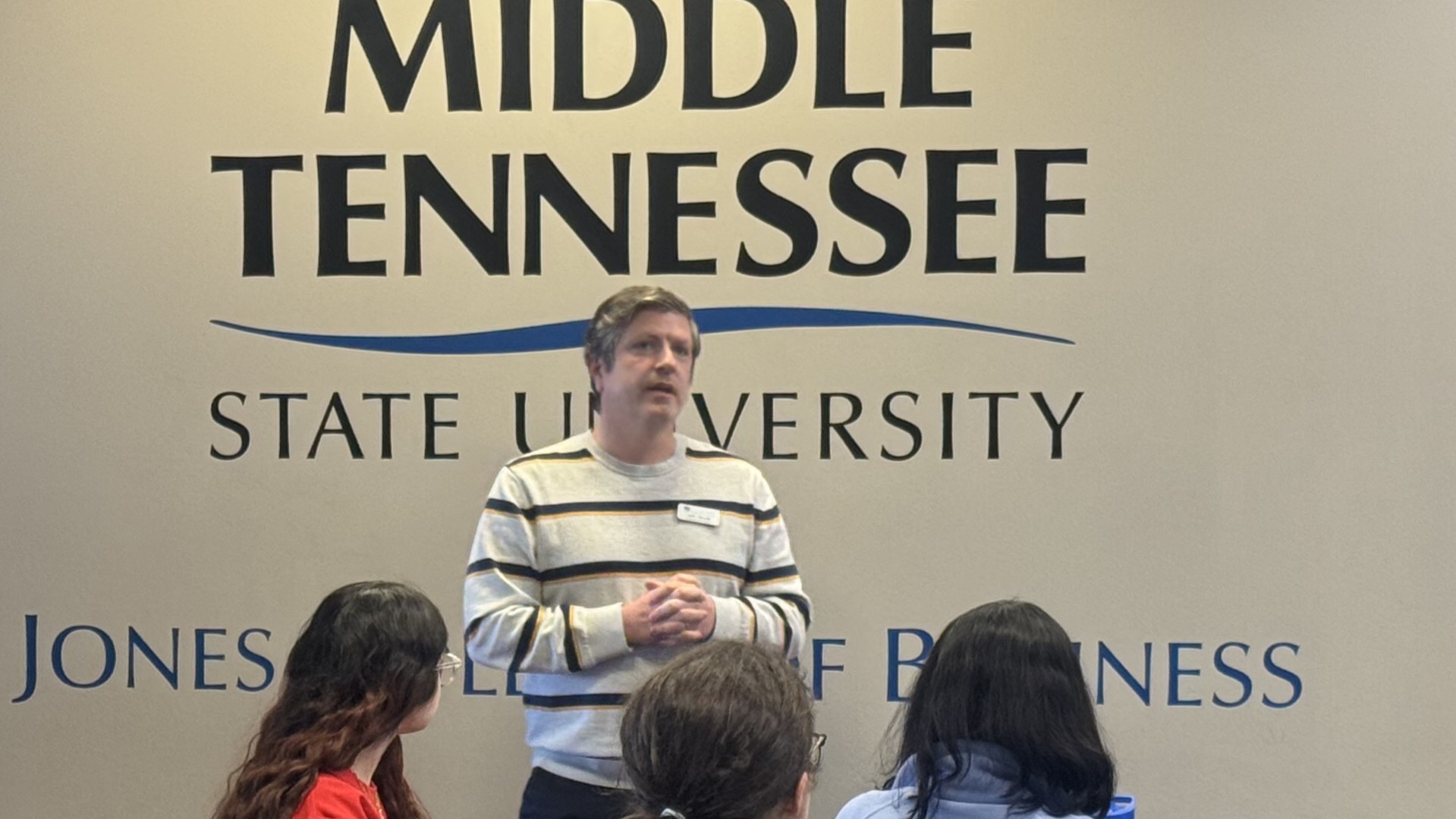Data Science
Data Science Blog
-
A Simulation Characterizing Out-of-the-Box Stock Trading Behavior of Various LLMs
Dr. Sal Barbosa, from MTSU’s Department of Computer Science, discusses the behavior of LLM in the analysis of financial markets. The intersection of artificial intelligence and finance has led to a surge of interest as Large Language Models (LLMs) have come on the scene and promise to automate decision-making in many tasks, including stock trading.…
-
Faculty and Staff Spotlight – Emmanuel Nkansah, PhD
Dr. Nkansah joined MTSU in 2024. DATA classes taught: DATA 1500, DATA 2025, DATA 3500, DATA 6320, DATA 6300, DATA 6310, DATA 6330 Home Department: Department of Economics and Finance Research Interests: Econometrics (Time Series), Financial Machine Learning, Machine Labor (Joshua D. Angrist), Labor and Development Economics Why pursue data science: Data Science isn’t just…
-
Big Data and Large Scale Computing Challenges
Dr. Henrique Momm from the Department of Geosciences will discuss some of the challenges driving Geoscience research. The talk will explore hydrological and environmental modeling and their application to geospatial data. Geosciences are undergoing a revolution, driven by massive, high-resolution datasets that fundamentally change how we study the Earth. This presentation will describe key datasets…
-
Predicting Workers’ Compensation Dispute Outcomes with Large Language Models
Dr. Vajira Manathunga from MTSU’s Department of Mathematical Sciences talks about some of his work on applying LLM’s in actuarial science. His work compares the results from LLM to NLP pipelines. Workers’ compensation insurance is one of the oldest social insurance programs in the United States, predating both Social Security and unemployment insurance. When disputes…
-
Real-time Edge Computing for Autonomous Systems
Dr. Junlin Ou from MTSU’s Department of Engineering Technology presents a series of studies on real-time edge computing for autonomous systems, focusing on algorithmic development and hardware implementation for intelligent robotic applications. The research encompasses indoor positioning, path planning, and real-time decision-making in dynamic environments. A recent highlight is the development of a GPU-enabled evolutionary…
-
MTSU Launches New Undergraduate Certificate in Using Artificial Intelligence
Data Science at Middle Tennessee State University is excited to announce the launch of a forward-looking undergraduate certificate: Using Artificial Intelligence (AI). Designed for students eager to explore the transformative power of AI, this 10-credit hour program provides hands-on experience and practical skills that will serve students across a wide range of disciplines and career…
-
Modeling the Impact of Host Heterogeneity on the Dynamics of a West Nile Virus Epidemic
MTSU Computational and Data Science student, Paul Klockenkemper’s work explores approaches for moldeling complex dynamic systems using ODE. West Nile Virus (WNV) is a mosquito-borne arbovirus with significant ecological and public health implications. It is maintained primarily through a transmission cycle involving avian hosts and mosquito vectors. Host diversity, competence, and demographics, as well as…
-
Faculty and Staff Spotlight – Meet Dr. Keith Gamble
Dr. Keith Gamble is the Weatherford Chair of Excellence Chairperson and a Professor of Finance in the Jones College of Business. Year joined MTSU: 2016 Data Science Involvement at MTSU Dr. Gamble leads the MTSU AI Initiative. He developed DATA 1010- Artificial Intelligence in Action Why Data Science? Before the phrase “data science” was used, Dr. Gamble was trained as…
-
HPE HGT Hybrid Positional Enoding for Enhanced Structural Awareness in Heterogenous Graph Transform
MTSU Computational and Data Science Ph. D. student Nada Srour presents some of her work that explores approaches for optimizing heterogeneous neural networks in machine learning. Heterogeneous graph neural networks (HGNNs) are critical for modeling multi-relational data in domains such as recommender systems, biological networks, cybersecurity, and citation analysis. These graphs encode diverse node and edge…
-
Statistical and Deep Learning Approaches to Network and Sequential Data
Dr. Ramchandra Rimal, Department of Mathematics, will briefly discuss research that synthesizes advanced statistical network modeling and deep learning (DL) to analyze complex datasets in financial and medical domains. We’ll begin by exploring the theoretical foundations of statistical network analysis, including the Popularity Adjusted Block Model (PABM) and Sparse Subspace Clustering (SSC), for enhanced community…

Contact Us
MTSU Data Science
MTSU Box 0499
1301 East Main Street
Murfreesboro, TN 31732
615-898-2122










